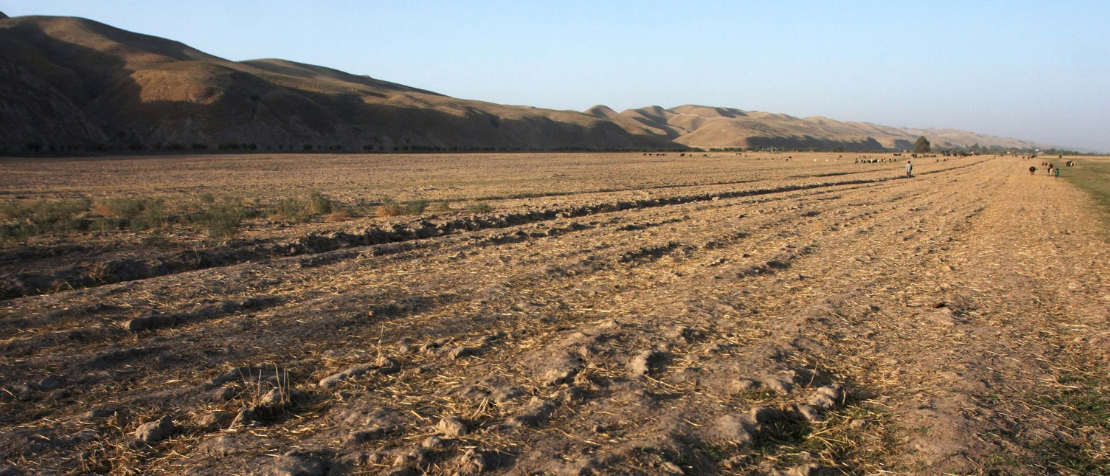From farmers to government officials — everyone benefits from a digital land cadastre

©FAO/Vasily Maksimov
Overall, land administration systems are essential for building stable, prosperous, and fair societies. They improve tenure security by providing clear and enforceable land rights, which leads to better management of land resources, benefiting both the economy and society.
Turkmenistan recognized that to achieve its development goals, it needed to invest in further development of its land administration system and land cadastre, which is its constituent part.
In 2022, the Food and Agriculture Organization of the United Nations (FAO) began supporting the Ministry of Agriculture of Turkmenistan and its Land Resources Service in modernizing and digitalizing the country’s land cadastre through the technical cooperation project “Support to the establishment of a Digital Land Cadastre”. This project is now concluding. A meeting was held 9 April in Ashgabat to mark the finalization of the project, recap the achievements and look to future actions to continue improving the digital cadastre system. The project was notable for its strong, productive and effective collaboration between FAO and the Government of Turkmenistan. There is still work to be done, but there is now the basis for a modern land administration system and more progress can be made from the solid foundation that has been laid.
Speaking at the event, Maxim Gorgan, FAO Land Tenure Officer, emphasized the link between a reliable digital cadastral system and agricultural, social and economic development. “Land administration system are essential in providing clear and enforceable land rights. Well-defined property rights guarantee security of tenure, which is essential for attracting investments. It paves the way for the country to move forward with sustainable agrifood systems and better livelihoods for everyone.”
One of the main outputs of the project to guide the reform process was the drafting of a strategy for development and digitalization of the land cadastre, known as the “Concept for the Development of Digital State Land Cadastre in Turkmenistan for 2025-2030”. This comprehensive document outlines a long-term development vision, the building blocks of a new system, and defines the roles and responsibilities. Related to the Concept and implementation of the Law on state land cadastre are the two new by-laws developed with the project’s support: one on the cadastral number, the unique identifier of a land parcel; and one on cadastral services and fees. The cadastral numbers serve as unique parcel identifiers that interconnect the land cadastre records with other institutions such as the Ministry of Justice, where land rights come into play.
The project facilitated establishment of a digital, streamlined land cadastre ecosystem that integrates all land-related data, including ownership and other legitimate tenure rights, land use, and geographical information. The core cadastral database is based on international good practice and ISO standards such as the Land Administration Domain Model (LADM), while being tailored to the national context, including its tenure system, legal framework, and institutional structures. A fully digital cadastre system will allow to overcome the current fragmentation of land-related data and ensure seamless interoperability between various land administration platforms.
The project supported the establishment of a Coordinate Reference System (CRS) and a Continuously Operating Reference Stations (CORS) network that form the essential geospatial infrastructure of a country, serving as the foundation for high-precision surveying and positioning, that allows authorities to undertake tasks such as zoning, urban planning, environmental monitoring, cadastral surveying, mapping, engineering surveys, and infrastructure development. Simply put at reference stations around the country receive satellite signals and redistribute them to devices that survey and measure land. FAO bought an initial set of three reference stations, four GNSS receivers, and a software that connects reference stations into a network and installed these devices in three provinces of the country.
This initial set up serves as a model for a comprehensive system to be rolled out. To achieve full coverage and build a complete CORS network, the Government of Turkmenistan acquired 65 reference stations and 97 GNSS receivers. This CORS network dramatically increases the accuracy of the surveying of the boundaries of the parcels and is essential for modern land administration systems. The data from CORS will have many benefits beyond simply the land cadastre — it is essential information for all infrastructure development, such as water systems or roadways.
It is a truism that any system is only as strong as the people who run it. To ensure expertise, FAO trained Land Resources Services staff through workshops and seminars with international experts who shared their knowledge and best practices in land administration and land reform. The training programme covered all aspects of the system, from institutional, legal and procedural aspects to more technical aspects such as geodesy, CORS network, GNSS technology in land surveying, digital infrastructure, and cadastre services.
There will also be tangible benefits for the ordinary citizens of Turkmenistan resulting from more efficient and client-oriented services available to right holders, promoting systematic, complete, comprehensive land registration for all land parcels in the country. When landowners and users interact with authorities charged with cadastre and land registration data to register land rights, to obtain information for inheritance, mortgage property or carry out a land transaction, they will receive faster, more transparent and affordable services.
With the successful completion of this project, Turkmenistan is now poised to leverage its modernized land administration system to foster economic growth, social equity, and sustainable development for all its citizens.
